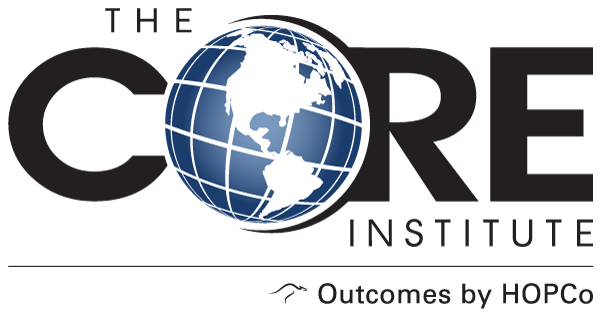Elbow Arthroscopy
Explanation of Procedure and/or Diagnosis
Elbow arthroscopy is a sterile procedure that allows direct visualization of the elbow joint to diagnose and treat several elbow conditions. This procedure is often used to release scar tissue, remove loose bodies or resurface the bone to decrease pain and improve range of motion. Elbow arthroscopy can also be used to repair lesions of the cartilage or for diagnostic purposes. The process involves making 1-2 cm small incisions (2-6) for insertion of an arthroscope (pencil sized camera) and instruments. During the procedure fluid is pumped into the joint to allow for visualization and wash the joint of debris.
Problems Treated with Elbow Arthroscopy
- Loose fragments in joint
- Lateral epicondylitis (tennis elbow)
- Fractures
- Arthritis
- Elbow stiffness
Elbow arthroscopy is most commonly an outpatient procedure, although some patients may be scheduled to remain inpatient depending on the procedure being performed. This procedure is performed under general anesthesia and your surgeon may request pre-operative lab work and medical clearance from your primary care physician.
Preparing for Surgery
Patients who are scheduled for arthroscopic elbow surgery should discontinue all anti-inflammatory (Advil, Aleve, Ibuprofen, Naprosyn, meloxicam, etc.) 7-10 days prior to surgery to decrease intra-operative bleeding. Medications that thin the blood need to be discontinued as well (aspirin, warfarin, Plavix), please consult with your primary care physician prior to stopping these medications. Many vitamins and supplements have blood thinning properties and should be stopped as well 7-10 days prior to surgery.
You should have nothing to eat or drink after midnight the night prior to your surgery, except medications that you are instructed to take by our surgical team with a sip of water. We recommend you wear loose fitting clothing that is easy for you to dress into after surgery. Please leave all jewelry at home, no jewelry will be allowed on the operative arm due to risks with swelling.
What to Expect at Surgery
You will be instructed by the surgical scheduler what time to arrive to surgery, typically this is 2 hours prior to your surgery. This is important to prepare you for surgery. Nurses will prepare the surgical site and administer any medications that have been ordered. An intravenous (IV) line will be started. You will receive pre-operative antibiotics to help prevent infection. The IV will remain in until you have recovered or until you no longer need intravenous support.
Before any surgery requiring anesthesia, a short pre-operative exam will be done by the anesthesia team. During this exam your Anesthesiologist will be assessing whether you have any conditions that may affect the course of your anesthesia. You will be asked questions pertaining to any allergies you may have and medications you may be taking. The Anesthesiologist will also ask about any prior anesthetics that you have had and your reaction to them. Your anesthesiologist will also ask about any previous or current health conditions as well as physical symptoms you currently have. A brief physical exam will include assessment of your heart and lungs. The Anesthesiologist will also perform an exam of your airway to assure you will not have any breathing difficulty during your surgery.
Your surgery procedure is specific to you and your; therefore surgical times can vary, although typically surgery will last 1-2 hours. Arthroscopic pictures will be obtained during the surgery and reviewed with you in your post-operative appointment 1-2 weeks after surgery. The surgeon will speak with your family or friends that are present after surgery to give them a brief overview of the procedures that took place.
After the surgery you will be taken to the recovery room where you will awake from anesthesia. Normally you are in the recovery room 1-2 hours before being discharged home. You will need to have someone available to drive you home after surgery. It is strongly recommended that someone stay with you the night of surgery while you continue to recover from anesthesia and in case of any side effects or complications that could occur.
Care after Surgery
Following completion of surgery a bandage will be placed over your surgical incisions. Specific instructions as to care of this bandage will be provided by your surgeon. If you are unsure or confused with these instructions; do not remove the bandage and keep it clean and dry until you speak to the surgeon or their team to clarify the instructions. Ice is applied immediately after surgery and thereafter intermittently for 20-30 minutes at a time over the first seven days. This reduces swelling and relieves pain. The small incisions take several days to heal, sometimes up to two weeks.
Some patients may be placed in a splint to immobilize their arm; this should not be removed unless instructed otherwise. A Continuous Passive Motion (CPM) machine may be ordered by your surgeon to help maintain your motion after surgery. A representative from the machine’s company will set up the machine and instruct you on its use. They will also provide you with their contact information should you encounter any difficulty or malfunction of the machine. Physical therapy will be scheduled after surgery to help you regain motion and strength. The start time of therapy will vary depending on procedures performed during surgery; you will be instructed on when to expect to start your therapy by your surgeon or his/her surgical team.
Medications
Take as prescribed. Narcotic pain medications such as Norco (hydrocodone) or oxycodone are used for severe pain. They can be taken up to every four hours as necessary. Most patients only require these medications for the first week. Once pain is better controlled, you may simply take Tylenol (acetaminophen) every four to six hours, not to exceed 3000 mg in one day. Take these medications with food. If you have any problems taking the medications, please stop them immediately and notify the clinic.
Possible Complications and Instructions
Every surgery has risks associated, as with any invasive procedure the risks associated with elbow arthroscopy are:
- Bleeding
- Infection. Common signs of infection include increasing pain after surgery, increased redness around the incision, swelling, and drainage.
- Complications from anesthesia, including death
- Permanent or temporary nerve or blood vessel injury
- Failure of fixation
- Need for further surgery
- Damage to other tissues or fracture
- Loss of limb or function
- A build-up of fluid in the elbow joint
- Recurrent instability is possible though uncommon
Please contact our office immediately if you feel you are experiencing any of these complications.
Questions
The CORE Institute is dedicated to your outcome. If any questions or concerns arise, please call The CORE Institute at 1.866.974.2673.




